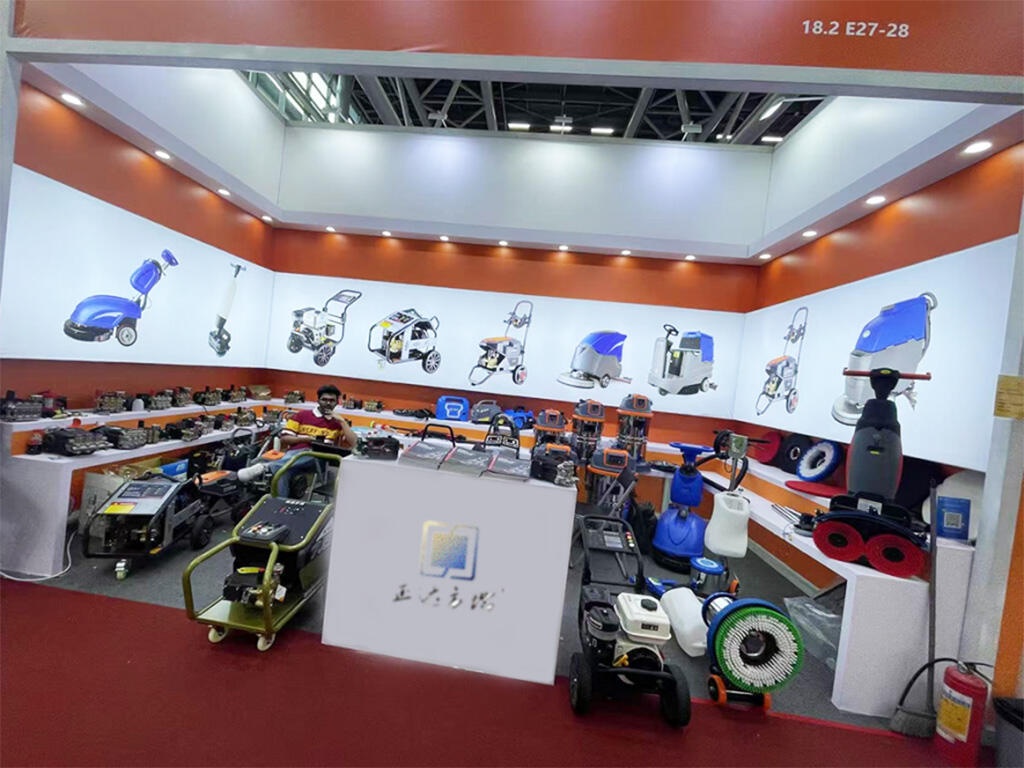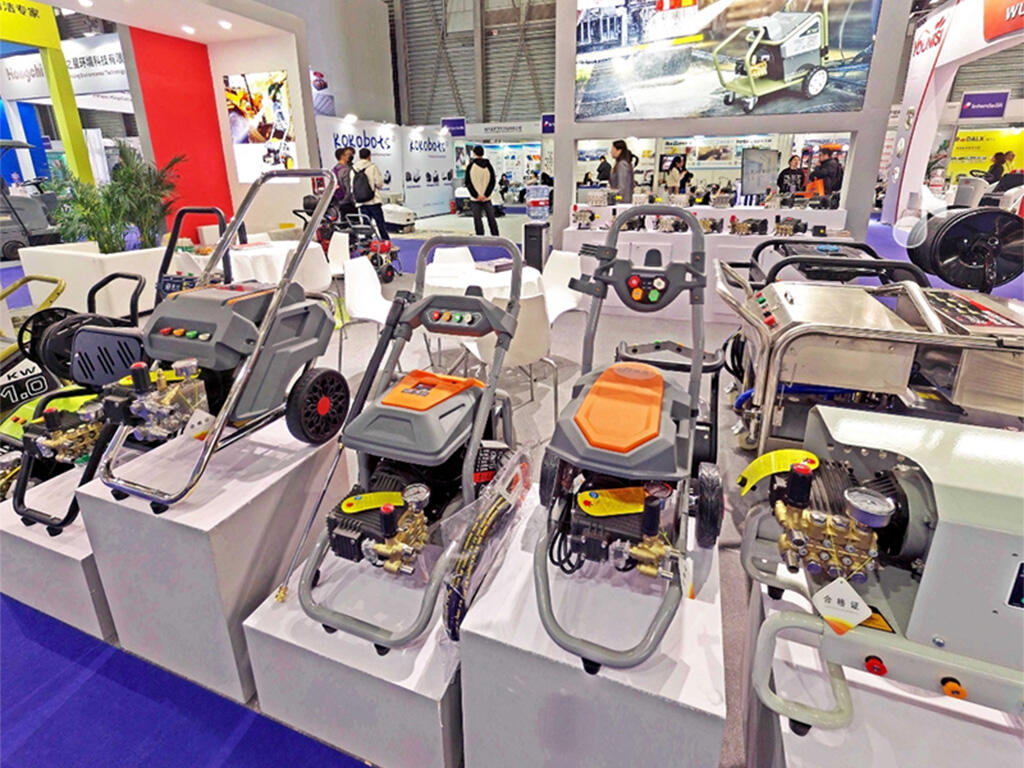في العالم السريع والنشيط الذي نعيش فيه، الحفاظ على النظافة هو من أهم الأولويات لكل من المساحات السكنية والتجارية. ومن بين مجموعة متنوعة من أدوات التنظيف، برزت غسالات الضغط المحمولة كأفضل رفيق للتنظيف، حيث تجمع بين القوة، المرونة والاستخدام السهل. قادرة على إزالة البقع العنيدة، الطين المتراكم والدهون بسهولة، أصبحت هذه الأجهزة الصغيرة ولكن القوية جزءًا أساسيًا في أدوات التنظيف لأولئك الذين يسعون لتحقيق بيئات نظيفة تمامًا.
فهم آليات عمل غسالات الضغط المحمولة
أجهزة غسل الضغط المحمولة مصممة بشكل ذكي كأجهزة صغيرة تستخدم تيار ماء بضغط عالٍ للتغلب على الأوساخ، العفن، الفطريات، وغيرها من الملوثات العنيدة. على عكس طرق التنظيف التقليدية التي تتطلب فركًا مستمرًا أو استخدام منظفات كيميائية قاسية، فإن جهاز الغسيل بالضغط المحمول يبسط العملية بشكل كبير. وبمسح بسيط للنافورة، يمكن للمستخدمين تقليل وقت وجهد التنظيف إلى النصف.
تتناسب هذه الآلات المتعددة الاستخدام مع مجموعة واسعة من المهام. في البيئة السكنية، يمكنها تحويل حديقة مليئة بالبقع والملوثات إلى سطح نظيف ومشرق، وإعادة الحيوية للأحجار المستخدمة في الشرفات، واستعادة لمعان أثاث الحديقة. أما بالنسبة لهواة السيارات، فإن جهاز الغسيل بالضغط المحمول يقوم بتنظيف سريع لإزالة الأوساخ الطرقية، وأوساخ الطيور، وغبار الفرامل عن المركبات. تجاريًا، يتم استخدامها لتنظيف واجهات المتاجر، والأرصفة والمعدات الخارجية، مما يضمن مظهرًا مرتبًا ومشجعًا.
الميزات الرئيسية التي تحدد أجهزة غسل الضغط المحمولة
عند البحث عن غسالة ضغط محمولة، من المهم جدًا فهم الخصائص الرئيسية للجهاز لاتخاذ قرار مستنير. هناك أربعة جوانب أساسية تستحق الانتباه: تصنيف الضغط، معدل التدفق، الوزن، والقابلية للنقل.
يحدد تصنيف الضغط، الذي يُقاس بوحدة الرطل لكل بوصة مربعة (PSI)، القوة التي يتم بها طرد الماء من الجهاز. يشير PSI الأعلى إلى تيار ماء أكثر قوة، وهو أمر أساسي للتعامل مع وظائف التنظيف الصعبة. على سبيل المثال، غسالة ضغط بقوة 1300 - 1900 PSI كافية للأعمال البسيطة مثل غسل السيارات أو تنظيف أثاث الشرفة. ومع ذلك، بالنسبة للمهام الأكثر تحديًا مثل إزالة الكتابة الجدارية أو الأوساخ المترسبة بعمق من-surfaces الخرسانية، يُنصح باستخدام نموذج بقوة 2000 PSI أو أعلى.
معدل التدفق، الذي يُعبر عنه بالجالون في الدقيقة (GPM)، يشير إلى حجم المياه التي يمكن للغسالة الضغط تسليمها في دقيقة واحدة. يعني معدل تدفق أعلى أن المزيد من الماء يغطي منطقة التنظيف، مما يسمح بالتنظيف بشكل أسرع وأكثر كفاءة.
الوزن والقابلية للنقل هما أيضًا من العوامل الأساسية التي يجب أخذها في الاعتبار. النماذج الخفيفة الوزن ذات(handles) وعجلات مريحة تجعل من السهل المناورة حول الزوايا الضيقة وصعودًا وهبوطًا على السلالم، مما يقلل من الإجهاد الجسدي على المستخدم. بعض النماذج تحتوي حتى على خيارات تخزين مدمجة للكابلات والخراطيم، مما يعزز من سهولة استخدامها.
الفوائد المتعددة لوashers الضغط المحمولة
أكبر ميزة للwashers الضغط المحمولة هي سرعتها المذهلة. يمكن أن تستهلك طرق الغسيل التقليدية باليد وقتًا كبيرًا، غالبًا ما تستغرق أكثر من ساعة لمهمة واحدة. في المقابل، يمكن للwasher الضغط المحمول إكمال نفس المهمة في دقائق قليلة.
وراء السرعة، تقدم هذه الأجهزة أداءً تنظيفًا متفوقًا. يمكن للرذاذ المائي الضاغط النفاذ بعمق داخل الشقوق والفتحات والمسام، وإزالة الأوساخ والشوائب التي لا تستطيع أدوات التنظيف التقليدية الوصول إليها. هذا التنظيف الشامل لا يؤدي فقط إلى نتيجة أكثر جمالاً من الناحية الجمالية، ولكنه يساعد أيضًا على زيادة عمر الأسطح عن طريق منع تراكم الملوثات الضارة.
من الفوائد البارزة الأخرى هو كفاءة استخدام المياه. وعلى الرغم من الرش القوي، فإن غسالات الضغط المحمولة تستهلك فعليًا كمية أقل من المياه مقارنة بالطرق التقليدية مثل استخدام خرطوم الحديقة باستمرار. وهذا يجعلها خيارًا صديقًا للبيئة، حيث يقلل من هدر المياه مع تقديم نتائج تنظيف مذهلة.
اختيار غسالة الضغط المحمولة المثالية
يبدأ اختيار غسالة الضغط المحمولة الصحيحة بتقييم مهام التنظيف المحددة التي يجب إنجازها. بالنسبة للأعمال المنزلية الروتينية، فإن النموذج الذي يحتوي على تصنيف ضغط بين 1300 و 1900 رطل في البوصة المربعة ومعدل تدفق معتدل سيكون كافيًا. ولكن من أجل المهام الأكثر تحديًا، مثل تنظيف المساحات التجارية الكبيرة أو المعدات الثقيلة، يكون من الضروري استخدام نموذج ذي قوة أعلى.
اختيار نوع المحرك مهم أيضًا. غسالات الضغط الكهربائية هي خيار شائع للاستخدام السكني بسبب تشغيلها الهادئ وسهولة استخدامها - فقط قم بتوصيلها بمنفذ كهربائي. من ناحية أخرى، توفر غسالات الضغط التي تعمل بالوقود قوة أكبر وقابلية للحركة، مما يجعلها مثالية للمشاريع الأكبر أو المناطق التي لا يوجد بها تيار كهربائي.
اتجاهات الصناعة والمستقبل الواعد أمامنا
يتصاعد الطلب على غسالات الضغط المحمولة، مدعومًا بزيادة التركيز على النظافة والصحة. مع اعتبار المزيد من الناس منازلهم كملاذات شخصية واستثمارهم في تحسين فضاءاتهم الخارجية للعيش، ارتفعت بشكل كبير الحاجة إلى أدوات تنظيف فعالة.
تساهم التطورات التقنية أيضًا في تطور غسالات الضغط المحمولة. تصمم النماذج الحديثة لتكون أكثر كفاءة في استهلاك الطاقة والمياه، دون المساس بقوة التنظيف. كما يركز الصانعون على إنشاء آلات أكثر تنوعًا، مع خراطيم سريعة الاتصال وملحقات قابلة للتبديل تتيح للمستخدمين التبديل بين مهام التنظيف المختلفة بسهولة.
في المستقبل، يمكننا أن نتوقع رؤية ميزات ابتكارية أكثر، مثل الاتصال الذكي، الذي سيتيح للمستخدمين التحكم في جهاز غسل الضغط العالي من خلال تطبيق محمول، وتحسنات إضافية في صداقة البيئة. وبفضل هذه التطورات، فإن أجهزة غسل الضغط العالي المحمولة ستظل الشريك الأمثل للتنظيف لسنوات عديدة قادمة، لتلبية احتياجات المستهلكين المتغيرة باستمرار وإعادة تعريف معايير النظافة.




